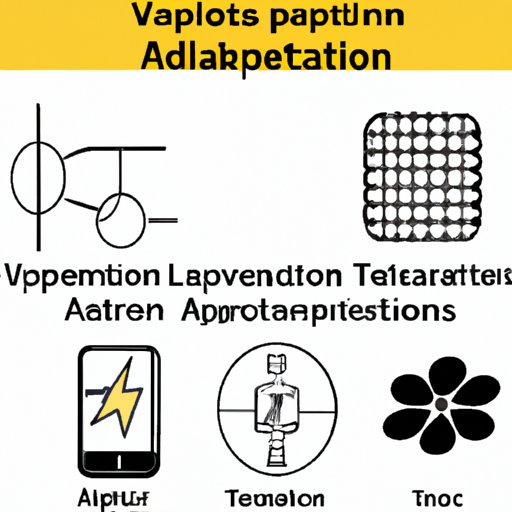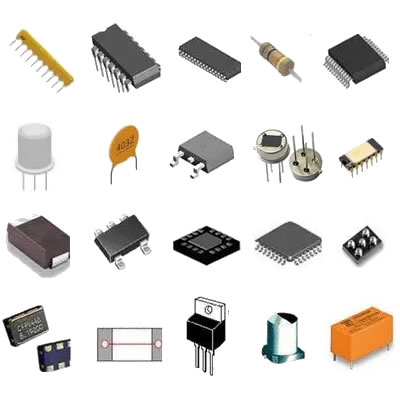What are the development trends in the high-voltage capacitor industry?
Development Trends in the High-Voltage Capacitor Industry
I. Introduction
High-voltage capacitors are essential components in various electrical systems, designed to store and release electrical energy efficiently. These capacitors play a crucial role in applications ranging from power generation and distribution to renewable energy systems and electric vehicles. As the demand for reliable and efficient energy storage solutions continues to grow, understanding the development trends in the high-voltage capacitor industry becomes increasingly important. This article aims to explore the historical context, current market landscape, technological advancements, regulatory considerations, market drivers and challenges, and future outlook for the high-voltage capacitor industry.
II. Historical Context
The evolution of high-voltage capacitors can be traced back to the early 20th century when the need for efficient energy storage solutions became apparent. Key milestones in the industry include the development of various dielectric materials, such as paper, oil, and ceramic, which have been used to enhance the performance of capacitors. Over the decades, advancements in manufacturing processes and materials have led to the creation of more reliable and efficient high-voltage capacitors, paving the way for their widespread adoption in various applications.
III. Current Market Landscape
A. Overview of the High-Voltage Capacitor Market
The high-voltage capacitor market has experienced significant growth in recent years, driven by increasing demand for energy storage solutions. According to market research, the global high-voltage capacitor market is projected to reach USD 5 billion by 2025, growing at a CAGR of 6% from 2020 to 2025. Key players in the industry include companies like Siemens, ABB, and Schneider Electric, which hold substantial market shares due to their innovative products and strong distribution networks.
B. Applications of High-Voltage Capacitors
High-voltage capacitors find applications in various sectors, including:
1. **Power Generation and Distribution**: Capacitors are used to improve the efficiency and stability of power systems, helping to manage reactive power and voltage levels.
2. **Renewable Energy Systems**: With the rise of renewable energy sources, high-voltage capacitors are essential for energy storage and grid integration, ensuring a stable supply of electricity.
3. **Electric Vehicles and Transportation**: As electric vehicles gain popularity, high-voltage capacitors are increasingly used in charging stations and energy management systems to enhance performance and efficiency.
4. **Industrial Applications**: Industries utilize high-voltage capacitors for power factor correction, energy storage, and voltage stabilization in various processes.
IV. Technological Advancements
A. Innovations in Materials
Recent advancements in materials have significantly impacted the performance of high-voltage capacitors. The development of new dielectric materials, such as polymer films and advanced ceramics, has led to capacitors with higher energy density, improved thermal stability, and enhanced reliability. These innovations enable capacitors to operate efficiently in demanding environments, making them suitable for a broader range of applications.
B. Manufacturing Processes
The manufacturing processes for high-voltage capacitors have also evolved, with automation and precision engineering playing a crucial role. Advanced manufacturing techniques, such as laser cutting and automated assembly, have improved production efficiency and product quality. Additionally, sustainable manufacturing practices are gaining traction, with companies focusing on reducing waste and energy consumption during production.
C. Smart Capacitors and IoT Integration
The integration of smart technology and the Internet of Things (IoT) into high-voltage capacitors is a significant trend in the industry. Smart capacitors equipped with sensors and communication capabilities allow for real-time monitoring and diagnostics, enabling operators to optimize performance and predict maintenance needs. This enhanced functionality leads to improved reliability and efficiency in energy systems.
V. Regulatory and Environmental Considerations
A. Impact of Regulations on the High-Voltage Capacitor Industry
The high-voltage capacitor industry is subject to various regulations aimed at ensuring safety and environmental sustainability. Compliance with safety standards and certifications is essential for manufacturers to gain market acceptance and trust. Additionally, environmental regulations are pushing companies to adopt eco-friendly materials and practices, leading to a shift towards sustainable capacitor solutions.
B. Trends Towards Eco-Friendly Materials and Recycling
As environmental concerns grow, the industry is witnessing a trend towards the use of eco-friendly materials in capacitor production. Manufacturers are exploring biodegradable and recyclable materials to reduce their environmental footprint. Furthermore, recycling initiatives are being implemented to recover valuable materials from end-of-life capacitors, promoting a circular economy within the industry.
VI. Market Drivers and Challenges
A. Key Drivers of Growth in the High-Voltage Capacitor Market
Several factors are driving growth in the high-voltage capacitor market:
1. **Increasing Demand for Renewable Energy**: The global shift towards renewable energy sources, such as wind and solar, is creating a need for efficient energy storage solutions, driving demand for high-voltage capacitors.
2. **Growth in Electric Vehicle Adoption**: The rising popularity of electric vehicles is boosting the demand for high-voltage capacitors in charging infrastructure and energy management systems.
3. **Infrastructure Modernization**: Aging electrical infrastructure is prompting investments in modernization, leading to increased demand for high-voltage capacitors to enhance system performance.
B. Challenges Facing the Industry
Despite the growth potential, the high-voltage capacitor industry faces several challenges:
1. **Supply Chain Disruptions**: Global supply chain disruptions, exacerbated by the COVID-19 pandemic, have impacted the availability of raw materials and components, affecting production schedules.
2. **Competition from Alternative Technologies**: The emergence of alternative energy storage technologies, such as batteries and supercapacitors, poses a competitive threat to traditional high-voltage capacitors.
3. **Cost Pressures and Economic Factors**: Fluctuations in raw material prices and economic uncertainties can impact the profitability of manufacturers, necessitating cost management strategies.
VII. Future Outlook
A. Predictions for the High-Voltage Capacitor Market
The future of the high-voltage capacitor market looks promising, with several emerging technologies and innovations on the horizon. Advancements in energy storage solutions, such as hybrid capacitors and advanced dielectric materials, are expected to enhance performance and open new applications. Additionally, the growing focus on sustainability will drive the development of eco-friendly capacitor solutions.
B. Strategic Recommendations for Industry Stakeholders
To capitalize on the growth opportunities in the high-voltage capacitor market, industry stakeholders should consider the following strategic recommendations:
1. **Investment in R&D**: Continuous investment in research and development is crucial for driving innovation and staying competitive in the market.
2. **Collaboration and Partnerships**: Collaborating with research institutions and technology partners can accelerate the development of new materials and technologies.
3. **Focus on Sustainability and Eco-Friendly Practices**: Emphasizing sustainability in product design and manufacturing processes will not only meet regulatory requirements but also align with consumer preferences for environmentally friendly solutions.
VIII. Conclusion
In conclusion, the high-voltage capacitor industry is undergoing significant transformation driven by technological advancements, regulatory considerations, and market dynamics. As the demand for efficient energy storage solutions continues to rise, industry stakeholders must adapt to these changes to remain competitive. By embracing innovation, sustainability, and collaboration, the high-voltage capacitor industry can position itself for a successful future.
IX. References
A comprehensive list of sources and further reading materials, including industry reports, market analysis documents, and academic papers, can provide additional insights into the high-voltage capacitor industry and its development trends.







